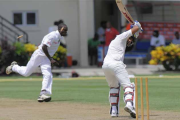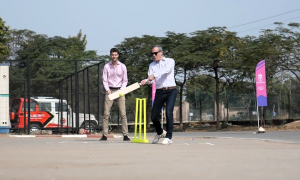Be it Sachin Tendulkar, Anil Kumble, Rahul Dravid or even the greatest Sunil Gavaskar, every one of them had played gully cricket more than twice or thrice in their childhood. In India, cricket is considered as a religion and the art of playing the game on narrow lane, gullies or streets is nothing short of an adventure that everyone loves to explore in their school or college days.
A major chunk of participants in the Gully Cricket are the children and youths. What’s more interesting is the fact that most of them wish to become Virat Kohli or any other batsman of repute in future, but no one wants to become a top-notch bowler. Unsurprisingly, the format of the gully cricket is such that it’s skewed in favor of batsmen irrespective of whether the game is played on roof-top, streets or even a balcony.
The Rules of Gully Cricket – Sweet and Weird
Believe it or not, India’s not so organized yet extremely popular – Gully Cricket is based on the simple concept that the gentleman’s game is more about batting and nothing else. Here are some salient aspects of Gully Cricket revealing why it is innovative, unique and unpredictable albeit, biased in favor of batsman most times.
- Toss: The age-old trend followed; a team winning the toss bats first.
- Dadagiri: The element of arrogance does exist in this format. A local boy with his association to some other powerful youths in the colony does matter; as the boy decides whether he is out or not, whether it’s over or not. You can’t question him or else it may lead to fight.
- Love Thy Neighbors: Every player knows where to hit the ball and where they shouldn’t. Some neighbors easily return the balls but some may straightaway come to shout at you.
- Baby Over: This concept doesn’t exist anywhere else, but baby over has its own relevance in India. A bad bowler is given 3 balls to bowl to opponent with the underlying rule that even if a batsman gets out off his delivery, the latter will be declared not out.
- Umpire: He is never a neutral person but always comes from the batting side. If his decision sounds suspicious he has to swear Godpromise a lot of times in the match.
- Tit for Tat: A batsman who hits the balls at pot holes or any other dangerous place will have to compensate for the same by paying a little more money than what the other boys pay.
- Stumps: Usually 2 or 3 bricks on the middle of a street are considered as stumps. But a dustbin can also be used for that matter. Real difficulty is to decide the legitimate height of the balls.
- One Tip One Hand: This is based on a unique system in which a batsman is declared out if the ball bounced just once after hitting the bat and fielder uses only one hand to catch the same.
- Chucking Allowed: There is no special rule regarding bowling in Gully Cricket. A bowler is allowed to bend his arm more than what prescribed by the International Cricket Council (ICC).
- No System of Reward: Whether you hit a ton or get 5 wickets, there’s no system of getting rewarded in gully cricket. But mere participation in this format becomes your most cherishing memory for a long time.
The Future of Gully Cricket in India
Gully Cricket will always remain an integral part of India’s cricket tradition, but slowly and slowly this legacy is getting disappeared. Especially, the way apartment culture is booming, there is very little space remaining for continuance of gully cricket.
The mushrooming of cricket academies in big and small cities of India is also affecting this format. A large number of cars on roads, children’s desire to spend more times on computer and several other factors are also contributing towards Gully Cricket’s imminent downfall in the near future. Solutions are not too easy to find, but development of more cricket playing fields and creating awareness about the importance of outdoor games among the youths will certainly help in preserving the legacy of India’s Gully Cricket intact.
Tags: Anil Kumble, Gully Cricket, ICC, India, International Cricket Council, Rahul Dravid, Sachin Tendulkar, Sunil Gavaskar, Virat Kohli













